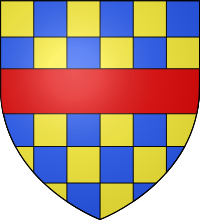
Baron Clifford is a title in the Peerage of England created by writ of summons on 17 February 1628 for Henry Clifford, the heir of Francis Clifford, 4th Earl of Cumberland. Francis was believed to hold the Barony de Clifford, created in 1299, which could therefore be used to give Henry a seat in the House of Lords during his father's lifetime via a writ of acceleration. However, it would later be determined that the barony had in fact passed to his niece, Lady Anne Clifford. The summons of 1628 therefore unintentionally created a new barony, held by Henry. In 1641, on his father's death, Henry inherited the earldom of Cumberland, which became extinct upon his own death in 1643.
Henry's only child, Lady Elizabeth Clifford, succeeded to the 1628 Clifford barony in her own right (although, as was customary in those days, she never made claim to it). In 1635, Elizabeth had married Richard Boyle, the heir of Richard Boyle, 1st Earl of Cork. The younger Boyle inherited his father's titles in 1643, but was unable to sit in the English House of Lords as they were all in the Peerage of Ireland. In 1644 he was therefore created Baron Clifford of Lanesborough in the Peerage of England, which allowed him to sit in the Lords. Boyle was created Earl of Burlington in 1664.
The 1628 and 1644 Clifford baronies remained with the Earls of Burlington and Cork until the death of the 3rd and last Earl of Burlington in 1753, when the earldom of Burlington and the Clifford of Lanesborough barony (i.e. the 1644 creation) became extinct.
The 1628 Clifford barony then devolved upon Charlotte Cavendish, Marchioness of Hartington, wife of the future 4th Duke of Devonshire. The barony was held by the Dukes of Devonshire until the death of William Cavendish, 6th Duke of Devonshire in 1858, since when it has been in abeyance.
- ^ Debrett's Peerage & Baronetage, 1968, p.262
